Summit to Summit: The Climbing Legacy of Major KS Dhami
Blogs
In the shadow of the grand Himalayas, where the air thins with altitude and the snow-capped peaks tower over the landscape, there lies a realm where courage and determination blend to overcome some of the toughest challenges on Earth. This is the world of Major KS Dhami—a tale of grit, adventure, and an unyielding drive to climb the seemingly impossible.
The Spark of Inspiration
In a small town in Punjab, where every street corner buzzed with tales of bravery, a young boy named Kulwant Singh Dhami was all ears. His granduncle, a World War I veteran who lost a leg in battle, and other family members, soldiers in the Indian Army, were his heroes. Their stories of courage and sacrifice lit a fire in Dhami’s heart, inspiring him to dream of following in their footsteps.
The Path to Adventure
Dhami’s journey began when he joined the Indian Army’s Electronics and Mechanical Engineers (EME). He hoped to serve in the Para services, but life had other plans. In 1990, while escorting a VIP in Darjeeling, he visited the Tenzing Norgay Everest Museum—a moment that would change his life forever. As he walked through the museum, seeing the photos and reading the stories of mountaineering’s triumphs and tragedies, something inside him stirred. He knew he had to give it a try. So, without hesitation, he requested leave from the army, paid 400 rupees for a mountaineering course, and embarked on a new journey.
Early Climbing Experiences
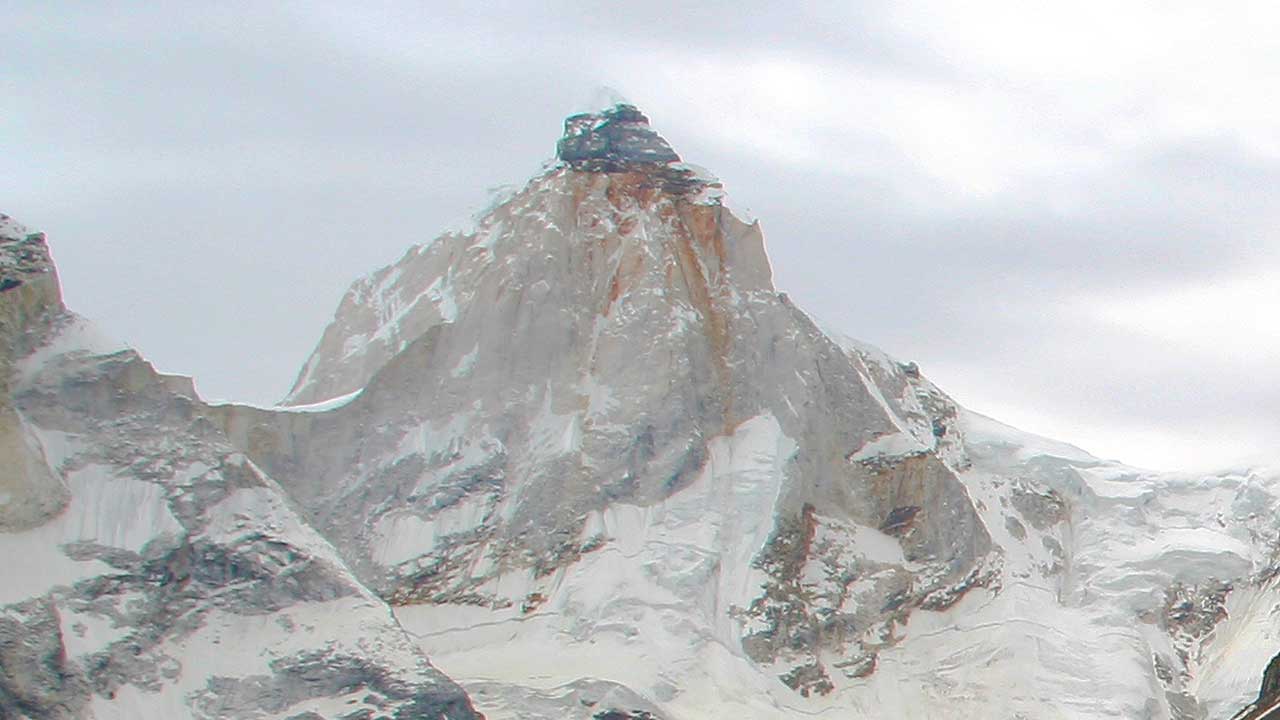
Dhami’s formal mountaineering began in 1992 when he was assigned as a Liaison Officer in a Japanese expedition to Thalay Sagar Peak (6904m). Although the team didn’t reach the summit—due to the lingering effects of the 1991 earthquake in Uttarakhand—Dhami wasn’t discouraged. Instead, he saw it as a launchpad into the world of climbing. He explored bouldering, rock climbing, and mountaineering, finding new challenges to conquer. He was soon hooked on the adrenaline and the sense of accomplishment that came with each ascent. His philosophy was simple: if you’re going to do something, do it with everything you’ve got and aim to excel.
A Trailblazer in the Making
Dhami’s natural talent and relentless drive set him apart from the start. His first successful expedition came in September 1998 when he climbed Sudarshan Peak (6529m). But the moment he truly made history was in June 1999, when he became the first person to summit Mukut Parvat East, a formidable 7,130-meter peak in the Garhwal Himalayas. This was more than just a personal achievement—it was a milestone that thrust him into the ranks of elite mountaineers. Dhami had arrived, and the world was taking notice.
Pushing the Boundaries
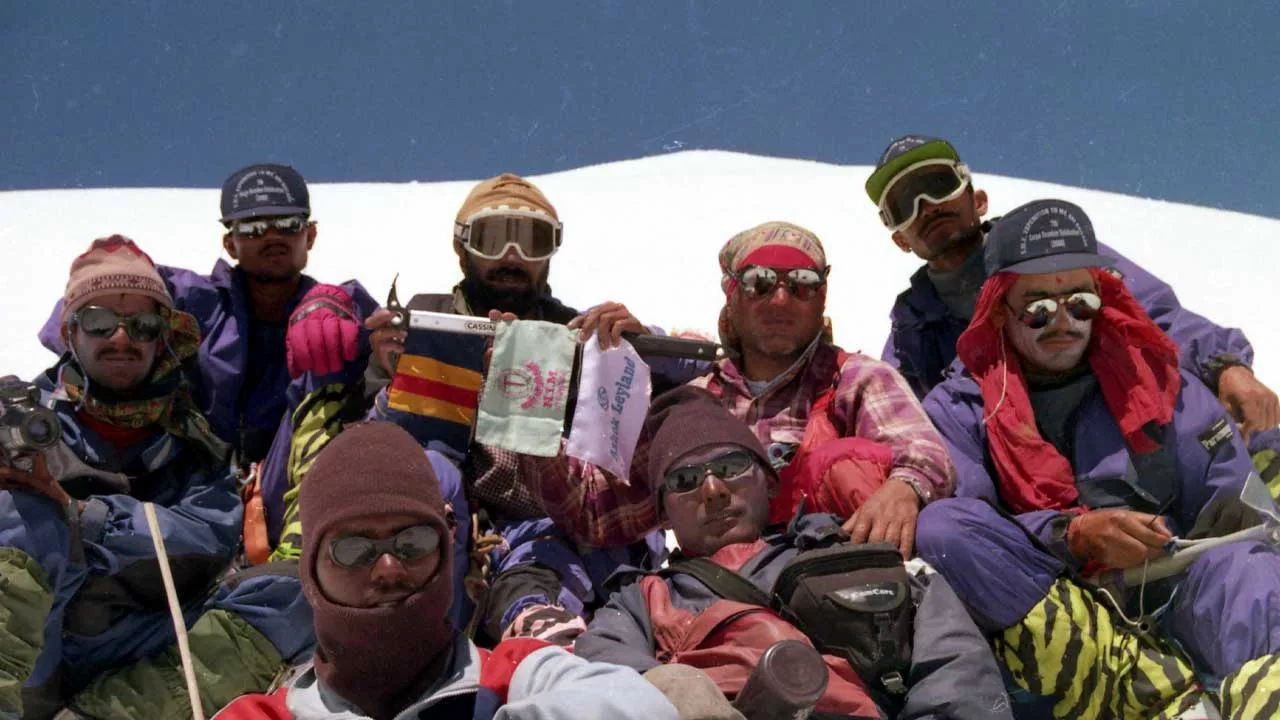
Dhami’s secret weapon was his speed. In June 2000, during an EME expedition to Shri Kailash Peak (6932m), he set a record by completing the entire climb from Uttarkashi to Uttarkashi in just eight days and first ever ski decent of this mountain —an incredible feat that demonstrated his stamina and efficiency. His rapid pace wasn’t just about speed—it was a testament to his philosophy: if you’re going to do something, give it everything you’ve got.
The journey of Major KS Dhami is nothing short of inspiring. From humble beginnings in Punjab to record-breaking expeditions in the Himalayas, his story is a reminder that the spirit of adventure can lead to extraordinary things. As we follow Dhami’s path through the mountains, we’re reminded that greatness isn’t just about reaching the summit; it’s about having the courage to pursue our dreams and the tenacity to give our all to what we believe in.
1999: Mukut Parvat East (7,130m) – First Ascent
In June 1999, Major Dhami embarked on a daring adventure to climb Mukut Parvat East, standing tall at 7,130 meters. This expedition marked the first-ever ascent of the Mukut East peak, a significant achievement in the world of mountaineering. The challenge was immense—with treacherous terrain and unpredictable weather conditions, Dhami and his team displayed extraordinary courage and determination as they pushed their limits to reach the summit.

The journey to Mukut Parvat East tested the climbers both physically and mentally. Scaling steep ridges and navigating through crevasse-ridden glaciers, they faced numerous hurdles along the way. Yet, fueled by their passion for exploration and a relentless pursuit of greatness, they pressed on, overcoming every obstacle that stood in their path.

As the Officer Commanding of the LRW in 3 Cavalry, he shares a unique and cherished bond with the regiment. He consistently ensured that the 3 Cavalry flag, alongside the National and other banners, accompanied him to the summit of every mountain he led and climbed. The 3 Cavalry also regard him as their regimental officer.
When they finally stood triumphantly atop Mukut Parvat East, gazing out at the breathtaking panorama of the Himalayas, Dhami and his team knew their perseverance had paid off. This historic achievement not only added another feather to Dhami’s cap but also solidified his status as a fearless trailblazer in the world of mountaineering.
2001: Trisuli West and Kedardome Expeditions
In September 2000, Major Dhami and his fellow climber, the experienced Ratan Singh, embarked on a four-day reconnaissance trip to the Advanced Base Camp of Trisuli West. Dhami respectfully called Ratan Singh “Guruji,” acknowledging his expertise. The trip helped them understand the terrain and plan their strategy for the climb ahead.

On 17 July 2001, Major KS Dhami led the first-ever successful ascent of Trisuli West, also known as Trisuli II—a challenging 7,035-meter peak in the Garhwal Himalayas. This climb had proven too difficult for many Indian and foreign teams due to its steep gradients and brutal weather conditions. Yet, Dhami and his team were determined to succeed. During the expedition, a tent mate’s sleeping bag fell from the summit camp at 6,630 meters, forcing them to share one sleeping bag in temperatures below -10 degrees Celsius. It was a test of resilience and camaraderie, but they overcame the odds to achieve this remarkable milestone.
Along with Dhami, the team consisted of Ratan Singh, Laxman, Jagmohan, and Soni, each contributing to this groundbreaking success. Together, they proved that with teamwork and determination, even the most challenging peaks can be climbed.
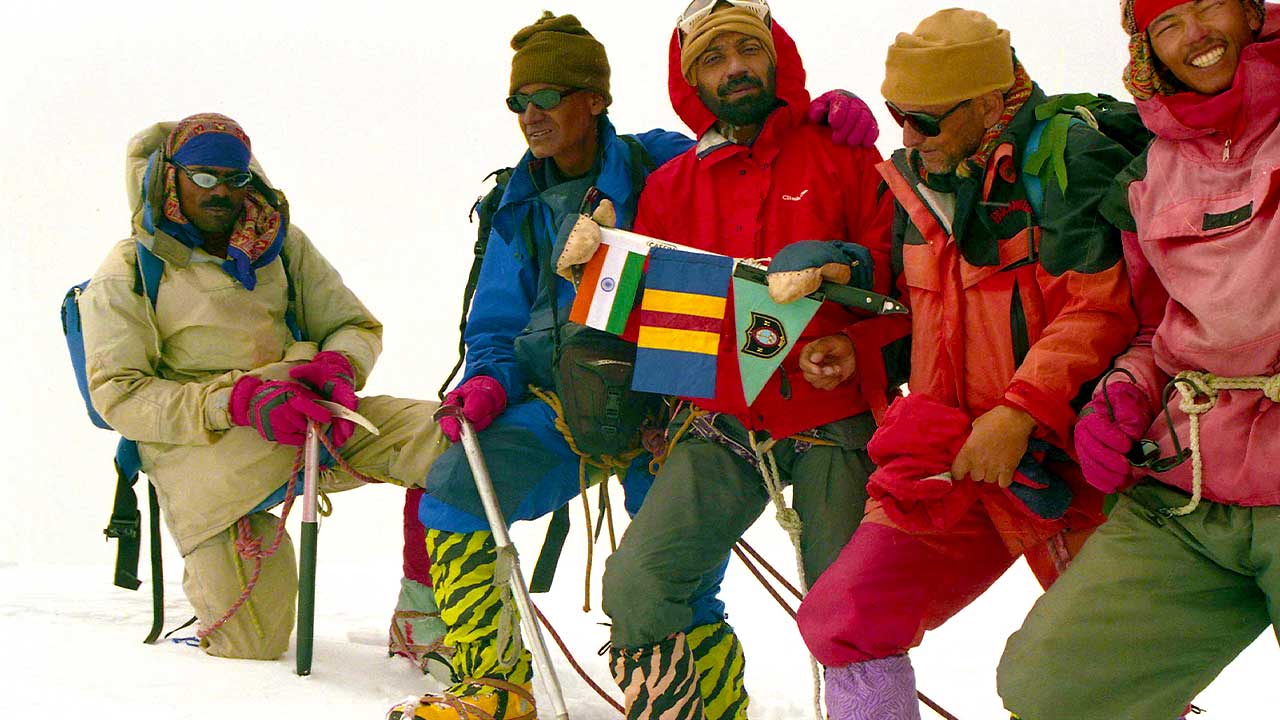
Soon after, Dhami took on another challenge: climbing Kedardome (6,832 meters) twice within 23 days (11 May and 4 June 2001). The first ascent was memorable for its speed, while the second featured an adventurous ski descent. Dhami’s ability to push boundaries and explore new frontiers demonstrated his fearless spirit and relentless commitment to mountaineering.
2003: Everest Expedition and Satopant Climb
In May 2003, Major Dhami took on a pivotal role as the Vice Principal and deputy leader of the HMI Everest expedition from the Tibetan side, tackling the challenging North Col. Despite his leadership, only two members—Nadare Sherpa and Kushang Sherpa—reached the summit. Dhami and Amar Singh had to turn back from 8100 m due to health issues; Dhami himself contracted bronchial pneumonia and was advised to stay in bed for six months. But Dhami wasn’t one to be held back. Just four months later, defying medical advice, he was back in the mountains, climbing Satopant, a 7,084-meter peak.
In August 2003, Dhami led an EME expedition to Satopant, a peak renowned for its sharp, knife-edge ridges and challenging routes. This time, he completed the climb from Uttarkashi to Uttarkashi in just nine days—an astonishing feat that underscored his resilience and leadership. His quick recovery and return to the high peaks were nothing short of remarkable.
2006: Kabru North in Sikkim
In May 2006, Major KS Dhami took on yet another formidable challenge, leading an expedition to Kabru North (7,412 meters) in Sikkim. This peak had been climbed only once before, many years ago, by an army team. Despite its fierce reputation and harsh conditions, Dhami and his teammates made it to the summit, cementing Dhami’s status as a climber with unmatched determination and skill.
Pivotal Climb: Remo Peak

An army special operation with IMF to Remo Peak (7,385 meters) Sep- Oct 2007 proved to be one of the most challenging—and pivotal —climbs in Major Dhami’s career. During the descent, a sudden blizzard hit, causing his team to fall and lose almost everything, including cameras and vital footage. Despite the chaos and the resulting challenges, Major KS Dhami stood his ground, saying, “It doesn’t matter what people say. My team and I know we climbed. It’s about the journey, not just the summit.”
This expedition had a significant impact on Dhami. He lost his gloves in the blizzard, leading to severe frostbite in his left hand. Instead of opting for amputation, he chose to let the frostbitten fingers fall off naturally—a process that took from October 2007 to July 2008. During this challenging period, Dhami continued his activities, showing incredible resilience and unwavering dedication to mountaineering. His choice to face the pain and allow his body to heal naturally was a testament to his inner strength and commitment.
Significant Milestones
Major KS Dhami’s career is marked by significant milestones, including the 2001 Tenzing Norgay National Adventure Award (equivalent to Arjun Award), honoring his exceptional contributions to mountaineering, and the Sena Medal (Gallantry) on the eve of Republic Day 2001. Chief of Army Staff (COAS) Commendation Card (2001). Chief of Army Staff (COAS) Commendation Card (2003). Though recognized for his achievements, Dhami remained grounded, always focusing on the essence of climbing—the journey and the personal growth it brings. This emphasis on the journey over the destination underscores his character and commitment to the spirit of adventure.

Mentorship and Influence: A Legacy of Inspiration
Major KS Dhami is not just a legendary climber; he’s also a revered mentor whose influence extends deep into the Indian climbing community. His guidance and training have shaped some of today’s most prominent figures in Indian mountaineering. In 1999, when he climbed Bhagirathi II, Col Neeraj Rana joined him, gaining invaluable experience from Dhami’s leadership. Later in 2009 Col Rana accomplished the first-ever successful Indian expedition to Mount Makalu. Also led the 2013 Everest expedition alongside the youngest youngster. At present Col Neeraj Rana is advisor of Ascent Descent Adventures. Another notable protégé is Lt. Col Vishal Ahlawat, who later climbed Mt. Everest. Dhami’s influence is far-reaching, touching the lives of many aspiring climbers. Col Amit Bisht, principal of the NIM, is another mountaineer who benefited from Dhami’s mentorship and guidance.
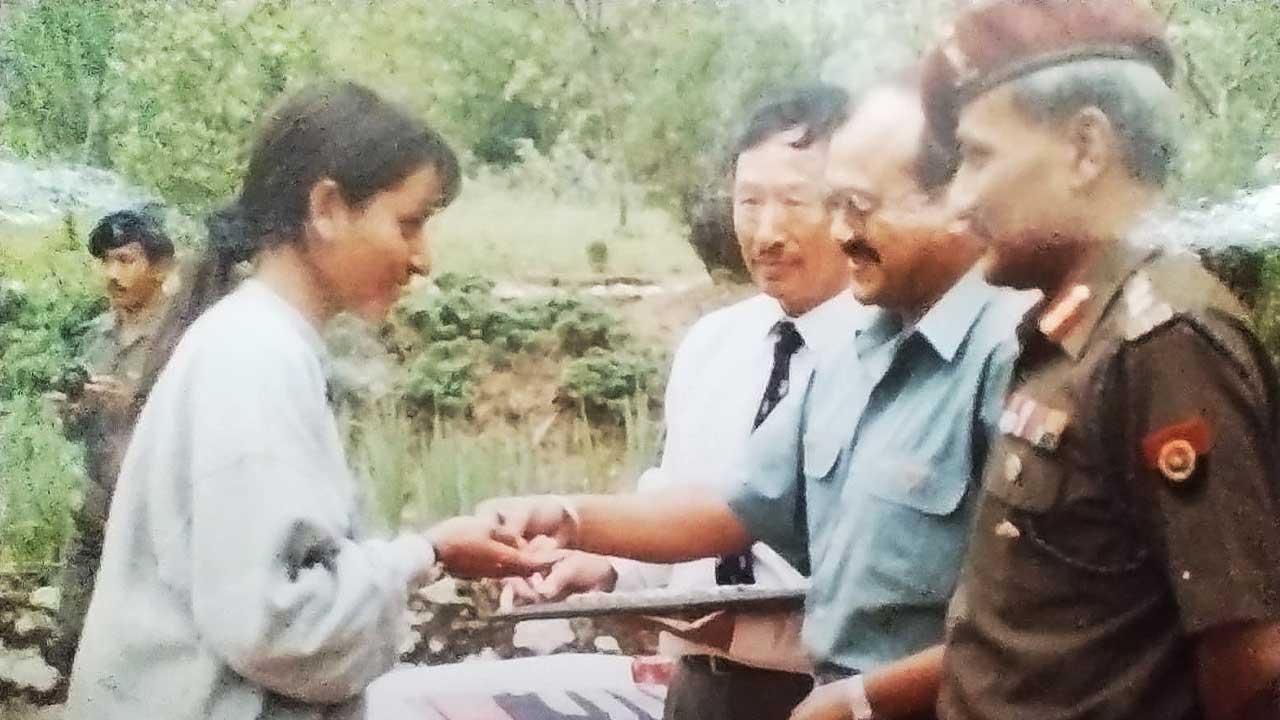
Even I have a personal connection with Major Dhami, having completed my mountaineering course under his supervision in 1999. This personal impact is a testament to Dhami’s dedication to mentoring and teaching the next generation of climbers.
Today, as the Honorary Treasurer of the Indian Mountaineering Foundation, Major KS Dhami continues to offer his expertise and guidance to the climbing community. His influence goes far beyond his expeditions. He is actively involved in shaping the future of Indian mountaineering, ensuring that the spirit of adventure lives on. By training and mentoring new climbers, he’s building a legacy that will endure for generations.
Philosophy and Approach to Climbing
Major Dhami’s philosophy is rooted in a profound understanding of the mountains as unpredictable and formidable forces of nature. He knows that, no matter how meticulously one prepares, the mountains have a way of surprising even the most experienced climbers. His guiding principle balances humility and boldness. “Anything is possible on the mountains,” he often says, reminding climbers of the importance of respecting nature’s power.
This philosophy shapes his climbing style. Major KS Dhami prefers a small team and Alpine style, which emphasizes self-sufficiency and light travel, over the traditional expedition approach. For many of his climbs, including the 1998 ascent of Sudarshan Peak, he chose the Alpine style, valuing its minimalistic approach and quick ascents. This style is favored by those seeking a deeper, more personal connection with the mountains, as it requires a greater degree of independence and resourcefulness.

Interestingly, Ascent Descent Adventures is the only company in the Indian Himalayas since 2010 to offer mountaineering courses in the Alpine style, reinforcing the impact this approach has on modern climbing trends. Dhami’s commitment to this style reflects his belief in fostering a new generation of climbers who appreciate the mountains’ beauty and respect their unpredictability.
New Adventures and Reflections on Modern Climbing
Despite the severe frostbite and the loss of several fingers after the Remo Peak expedition, Major Dhami has found new ways to enjoy adventure sports. He’s taken up paramotoring, which combines flying with a motorized paragliding wing. Initially, operating the brake lever without his fingers was a challenge, but with time and determination, he adapted, finding joy in his paramotoring trips.
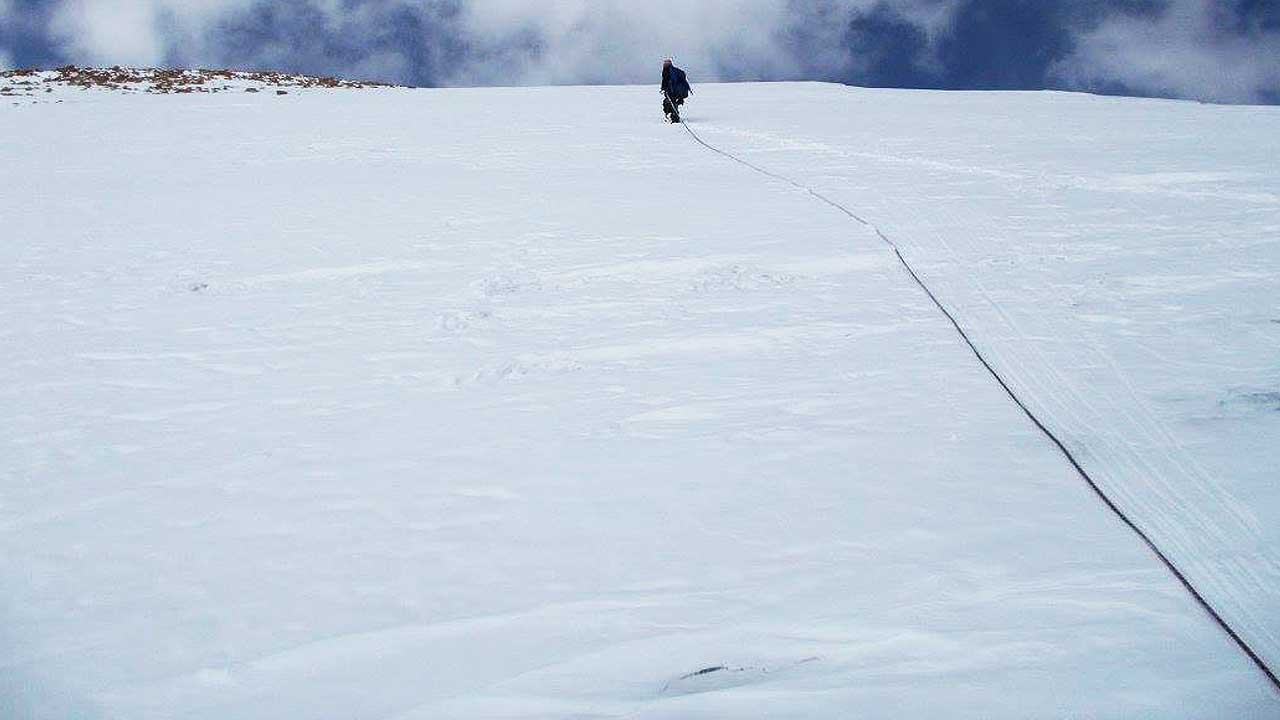
When it comes to today’s climbing trends, Major Dhami has a critical perspective. He believes modern climbing has become overly guided, with Sherpas handling much of the real work—reconnaissance, route setting, rope fixing, load carrying, and camp setup. Climbers today, he argues, often just follow the path laid out by others, carrying minimal loads and relying on oxygen cylinders, which are also transported by Sherpas or porters.
In contrast, Major KS Dhami recalls the earlier days when climbers did everything themselves. They conducted reconnaissance, opened routes, and carried their loads, embracing the spirit of Alpine-style climbing. This approach, he contends, taught climbers invaluable lessons about their limits and capabilities, fostering a deeper connection with the mountains. It’s this spirit of independence and self-reliance that Dhami hopes to preserve as he looks toward the future of mountaineering.

The Legacy of Major KS Dhami
Major KS Dhami’s journey through the mountains has been nothing short of extraordinary. From his early days in Punjab, inspired by tales of courage, to his record-breaking expeditions and significant milestones, Dhami’s career is a testament to the power of resilience, determination, and the spirit of adventure.
His groundbreaking climbs, from Mukut Parvat East to Satopant and Kedardome, set new standards in the world of mountaineering. Dhami’s relentless pursuit of challenging peaks, despite facing severe frostbite and other hardships, speaks to his unwavering commitment to the mountains. His ability to push boundaries and defy expectations has inspired many within the climbing community.

Dhami’s philosophy of climbing, grounded in humility and boldness, reflects his respect for the unpredictable nature of the mountains. His preference for the Alpine style, with its emphasis on self-sufficiency and independence, demonstrates his dedication to a deeper, more personal connection with the mountains.
Beyond his climbing achievements, Dhami’s role as a mentor and influencer has left a lasting impact on Indian mountaineering. Through his guidance, he has shaped the careers of prominent climbers and instilled the spirit of adventure in the next generation.
As Major Dhami explores new adventures, like paramotoring, and reflects on modern climbing trends, he remains a strong advocate for the traditional approach to mountaineering, emphasizing self-reliance and personal growth. He believes that true climbers are those who respect the journey and embrace the challenges that come with it.
Major KS Dhami’s legacy is built on his courageous expeditions, influential mentorship, and philosophy that values the journey over the destination. His story serves as an inspiration to all who seek adventure, reminding us that greatness lies in having the courage to take on the unknown and the perseverance to keep going, no matter the obstacles.
Explore our adventure stories:
Storms, Summit, and Survival: The Mt. Makalu Expedition
The Climb Within: Ajay Sohal’s Everest Ascent
The Unstoppable Climb: Pawel Sharma’s Pursuit of Everest